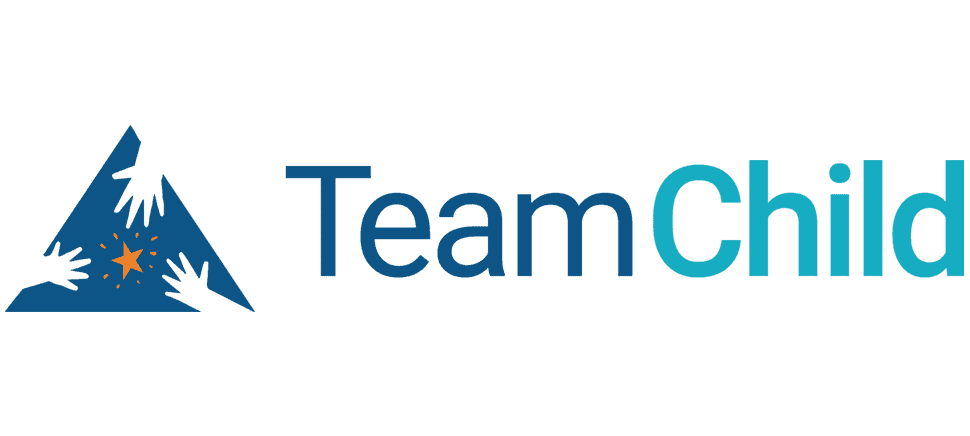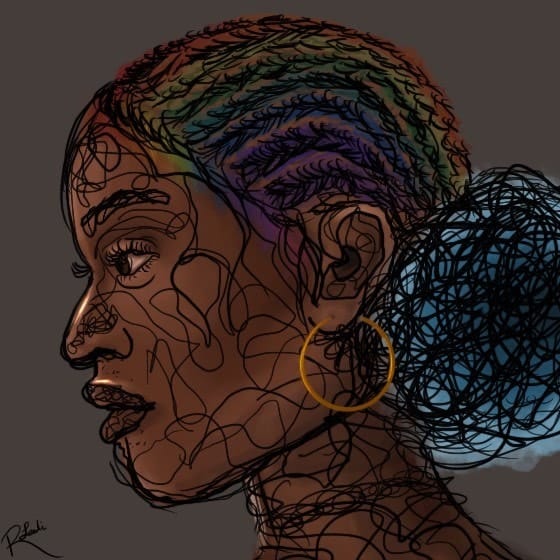Artwork by [email protected]
The Urgency of Inclusive Pride
This June, as Pride Month commemorates the 53rd anniversary of the Stonewall Uprising, advocates again face a critical moment in the development of an equitable, safe, and more-inclusive society. As the national political landscape continues to inform local and statewide political attitudes, and within the context of relentless attacks on the fundamental rights to exist and choose, the onus to uphold principles of equity and inclusiveness continues to be critically urgent. (For more on this topic, view a short video from Lavender Rights Project.) During Pride Month, TeamChild wants to recognize the overrepresentation of LGBTQ+ youth in juvenile legal and child welfare systems, and in populations experiencing homelessness and housing instability, while continuing to center the lived experiences of young people in informing our advocacy priorities and practices. An equity-based approach is about material redistribution to resolve the harms of and conditions creating overrepresentation of LGBTQ+ youth in child and young adult welfare systems.
When we say LGBTQ+ youth are overrepresented in juvenile and child welfare systems, this is what we mean:
LGBTQ+ youth are at an increased risk of homelessness compared to other groups.
- Young adults (18-25) who identified as LGBTQ+ experienced homelessness at 2.2 times the rate of their heterosexual, cisgender peers.
Among youth experiencing homelessness or housing insecurity, LGBTQ+ youth face especially high levels of adversity.
- 62% of LGBTQ+ youth experiencing homelessness report having been physically harmed by others
- 64% of LGBTQ+ youth experiencing homelessness report facing discrimination or stigma within the family, with 60% reporting they experience discrimination or stigma outside of the family compared to 37% for each measure respectively among cisgender youth
- LGTBQ+ youth are more than 2.5 times more likely to be forced to engage in sexual activity while experiencing homelessness than non-LGBTQ+ youth
The overrepresentation of LGBTQ+ in housing insecure populations is also a race equity issue.
- 16% of youth experiencing homelessness are Black and LGBTQ+, compared to 8% who are white and LGBTQ+, 7% who are Black and non-LGBTQ+, and 4% who are white and non-LGBTQ+
Of course, a young person’s gender identity or sexual orientation is only one element that may factor into their experience with housing instability. An analysis including race, poverty, mental health, addiction, and exposure to violence will uncover that gender identity and the coming out process provide an additional layer on top of an already-challenging material circumstance for many young people leading up to and during their experience with homelessness or involvement in the child welfare or juvenile legal systems.
This year and every year, TeamChild centers the lived experience of LGBTQ+ youth and engages our young people as partners in informing effective advocacy to better address their needs and build better systems. We also look to community organizations in our service regions for inspiration and call for continued collaboration to shift resources to affected populations of young people in the design and implementation of LGBTQ+ youth-focused programs specifically tailored through a race equity approach.
Here’s how you can learn more and get connected to community-based organizations doing this important work:
Local Resources
King County
- Lambert House – LGBTQ Youth Resources Page
- Gay City – Resource Database
- Center for Children & Youth Justice (CCYJ) – Supporting LGBTQ Youth
- BGLAD at Youth Eastside Services
- Cedar River Clinics
- Ingersoll Gender Center
- Powerful Voices
Community Organizations in our other service regions
- Oasis Youth Center (Pierce County)
- Odyssey Youth Movement (Spokane County)
- The Space (Yakima County)
National Resources
- The Trevor Project – Research brief: Homelessness and Housing Instability Among LGBTQ Youth
- TransFamilies (English and Spanish parent support groups and youth leadership)
- Voices of Youth Count – Research brief: Missed Opportunities: LGBTQ Youth Homelessness in America
Additional Resources
- Youth.gov – Research brief: Experiences of LGBTQ+ Youth in Child Welfare Systems
- Chase Strangio – The Courts Won’t Free Us – Only We Can



